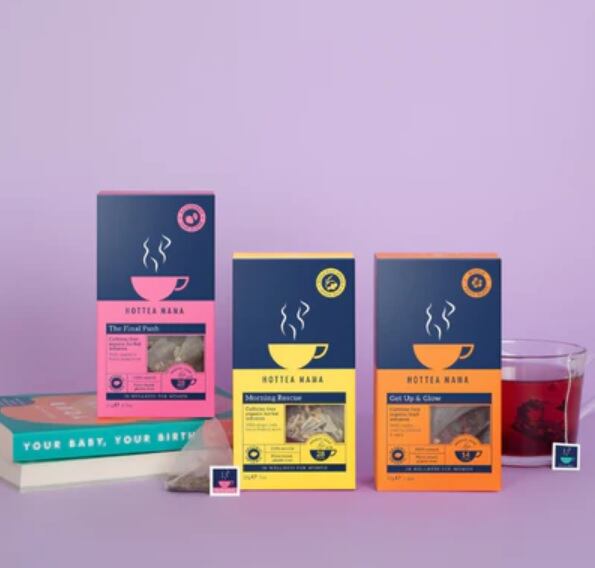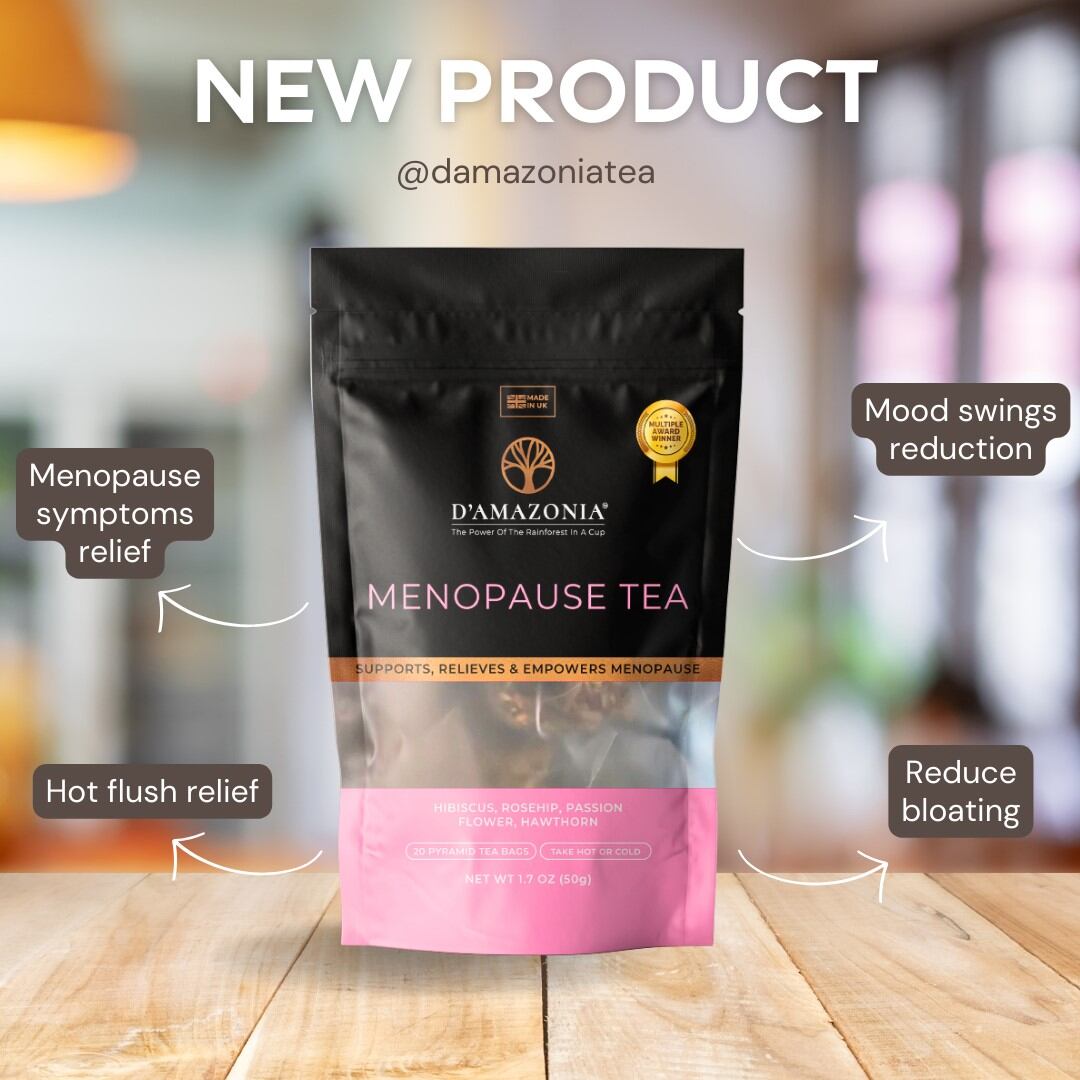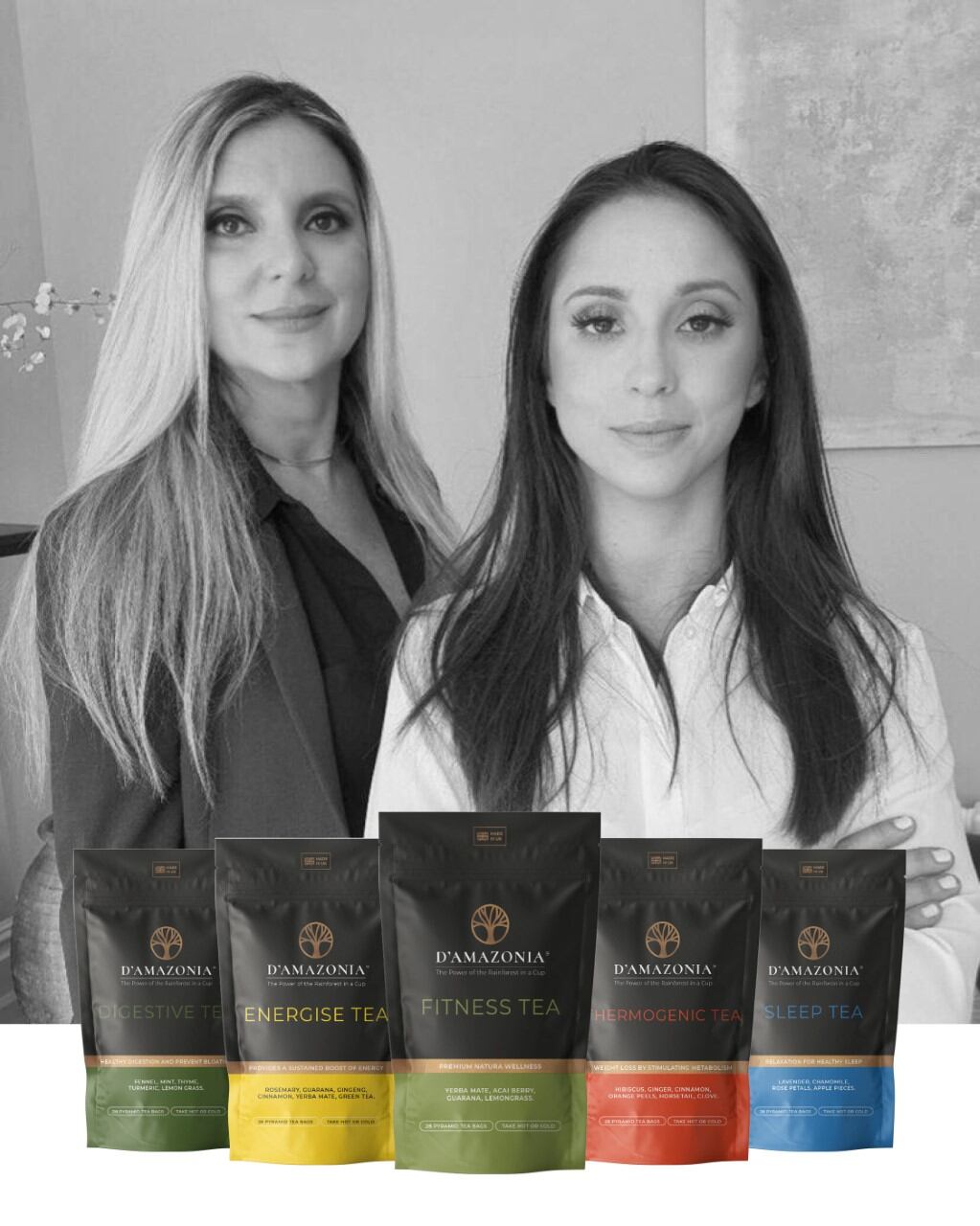Mass market areas such as hydration and energy all still sit at the core of today’s functional beverage market – and will continue to do so. But the market is changing. There's a rise of products targeting very specific needs across every aspect of physical - and mental - health.
There's now a host of beverages for cognitive health, anxiety and stress relief: to those that target highly specific niches: for example mimicking the effect of alcohol, dealing with a hangover, aiding sleep, and those adapted to pregnancy or menopause.
What's emerging is a market with demand for beverage functionality "unlike anything that has come before it," according to Euromonitor International.
Finding a niche
HotTea Mama was founded in the UK in 2017 by two women who had been through fertility struggles, subsequent pregnancies, and parenthood experiences.
That led them to create a range of teas that are targeted at women at specific periods of life: from PMS to pregnancy, parenthood to perimenopause. But even these have sub-ranges for specific needs.
A caffeine-free pregnancy tea range, for example, ranges from a 'Morning Rescue' tea (with anti-inflammatory, calming herbs) to a 'Final Push' drink that contains raspberry leaf (which has been used for millennia to prepare the body for labour).
The teas were created by Bethan Thomas: a tea scientist who was the first non-Chinese person to get a degree in Tea Science from the Agricultural & Forestry University in Fujian, China; and who had already worked as a tea buyer for some of the biggest tea buyers in the UK.
Entering the category as a first-mover was exciting, says Thomas, although acknowledges there's something of a catch 22: any entrepreneur worth their salt knows you need to do your market research - but what about when there isn't any data?
For the duo, their own experiences were a good start, as was talking to family and friends.

"As we initially targeted pregnancy and motherhood, we were confident that the market opportunity existed, due to our own experience of becoming parents," she said.
"Whilst as a large brand it is absolutely essential to do research and ensure large scale investment isn't misplaced, this will always mean coming late to a market and trying to buy leadership of it.
"But as a start up - when you're creating a market yourself - then if you look for guaranteed data you'll probably never start the business.
"You have to have passion - and some level of blind belief!"
The brand also started slowly: testing the market and then building up its own sales data to take to investors as it grew.
Fellow UK tea brand D’Amazonia was founded in 2020 by a Brazilian mother and daughter team. While the brand's initial range was oriented around more mass-market propositions (the range includes a digestive tea, a sleep tea and a fitness tea), January saw the company launch its menopause brew.
However, while a menopause tea might sound like a niche proposition - theoretically targeting only women between the ages of 45 and 55 - co-founder Marcela Tupinamba points out that's actually a huge audience.
"Latest data suggests that 13m women in the UK are currently menopausal or perimenopausal [the period before menopause], which is essentially a third of the female population.

"It doesn’t get better when you learn that 90% of women have been negatively impacted by symptoms of menopause - there are 30 symptoms ranging from brain fog and poor sleep patterns to anxiety and depression."
The brew was created by Dr Jose Carlos Tavares: who holds a PhD in pharmaceuticals & medicine with a special focus on the Amazonian biome and was named one of he most influential scientists in the world by Stanford University, and joined the company last year.
The blend includes hibiscus (supports cardiovascular health) rosehip (for anti-inflammatory properties), passion flower leaf (calming properties) and hawthorn (for lower blood pressure).
The framework for future innovation
What these brands have done is think about their audience in a very targeted way. Rather than being tempted to jump on top trending functional categories and create a mass market proposition, they've thought about what a specific consumer wants and worked backwards to create a product.
Matthew Barry, insights manager, food and beverage at Euromonitor, says the key is to focus on consumers' 'need states' and go from there.
“There are a potentially vast number of niche functionalities that could become more important in the future,” said Barry. “All you need for a successful need state is consumer desire to improve some aspect of their life and a functional ingredient that can speak to that.
“Something I for example long-term find interesting that basically doesn’t exist now is social functionalities. With alcohol consumption declines and social anxiety rising, I see a real opportunity in non-alcoholic drinks that could provide a boost of confidence for social situations. Very little like that exists today, of course. Some others that might in the long-term become more important include eye health and sexual health.”
These might require some creative thinking – eye health, for example, is a huge concern for people globally, but not an immediate fit for a functional beverage claim – but represents an area that is ripe for exploration.
Following trends on social media could be another way to keep the pulse of what consumers are seeking out. "For example, there has been a real surge in interest in gut health recently, particularly how it might be linked to things beyond digestion like mental health or the immune system," said Barry.
"Some of that growth in interest is a better scientific understanding of the microbiome but a lot of it is coming from the fact there are these online communities, most notably TikTok’s #guttok that are bringing this conversation public in a way that wasn’t happening before.”
Food (and beverages) as medicine
Euromonitor's research charts increased scepticism among consumers regarding the effectiveness and even safety of pharmaceuticals: leading them to try and gain similar health benefits naturally through food or beverages.
There’s no better example of this than the concept of ‘Food as Medicine’ or ‘Pill Fatigue’.
Short-term issues – such as colds, stomach aches or allergies – usually send consumers to the pharmacy for a quick fix.
However, consumers may be disillusioned or reluctant to turn to drugs for chronic conditions - sleep, stress and anxiety, or memory.
Sleep is a good example of food as medicine: Consumers usually prefer try natural alternatives before turning to drugs.
Getting out to consumers
By its very niche nature, this next generation of brands need to expect a slower and longer game in getting retail shelf space and gaining mass market appeal.
But the game-changer here is the internet: where consumers can seek out brands they want directly.
Today's consumers are invested in their own health and wellness: and are prepared to take the time and effort to research for what they need and investigate potential products.
Once a brand has built up sales online, that opens doors in retail. For D'Amazonia, that's already led to listings in Daylesford and Selfridges.

"We know that B2C (Amazon, our online shop….) provides the perfect springboard for health-conscious challenger brands like ours, not simply to educate but circumnavigate the vice like grip exercised by our heavyweight peers within bricks & mortar retail," said Tupinamba.
"B2C is the perfect canvas for us to fine-tune our messaging, positioning… whilst capturing essential consumer data. The light, easy-to-send nature of our fully biodegradable silk tea bags makes online the perfect nurturing arena.
"That said, our investor push is fast reaching its conclusion and over the coming months with a decent sales & marketing budget we know we can infiltrate more traditional hot beverage heartlands!"
For HotTea Mama, social media has been an integral part of reaching potential consumers.
"Our strategy has been strongly focused on growing an online community of HotTea Mamas via social media, over the six years that we've been in business," said Thomas.
"Initially, Instagram was our only marketing channel, and we grew organically through this channel by posting daily and communicating directly with women going through parenthood, perimenopause or period troubles. This has led us to have a 27.5k following on Instagram, and we've bolstered this with advertising on meta which is very successful on Facebook.
"We partner with nutritionists and medical experts in the women's wellness space, which expands our reach but keeps us very targeted to our core consumer. Alongside this, Tiktok has naturally grown, with many women sharing our products themselves - making mocktails with the teas that we hear about at exhibitions when we meet women in person!
"We do extremely targeted events too from baby events, to menopause events - for us, it's important to stay in our niche, rather than trying to appeal very widely to too broad an audience."
In 2022, the brand launched in high street retailer Holland & Barrett across the UK and Ireland, and also works with Selfridges and Planet Organic.
While each of the teas may cater for very specific niche states, the brand knows that can translate into loyal, long-term consumers. A tea that only appeals to a woman for nine months of pregnancy might not seem like a strong proposition to build a business on - but the brand offers a range of teas for a consumer to transition to.
While most consumers come to the brand as pregnant women, the range of teas then caters for breastfeeding to sleep and period support then into the 40s and perimenopause teas: as Thomas puts it - "The range is truly a life long natural support for women's wellness".
Consequently, the main target for the brand is to focus on the wellness space rather than the grocery space - 'we know our teas aren't bought with coffee and biscuits, but with vitamins, tampons, breast pumps and supplements'.
As these entrepreneurs show, once a brand has validated its product through online sales, it can then hope to be stocked by mass retailers and gain exposure to a wider mass market. UK gut health brand Zoe serves as another example: the brand started as a personalized gut health program based on consumers' at-home microbiome tests but recently launched a mass 'ultimate' milk kefir gut shot in conjunction with supermarket M&S Food.
As Matthew Barry of Euromonitor concludes: "The great functional interest of tomorrow is a niche online community today".

